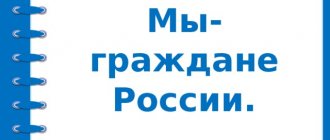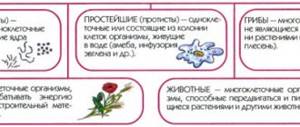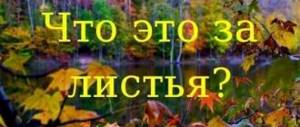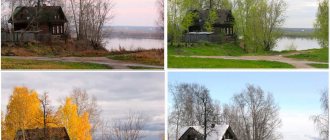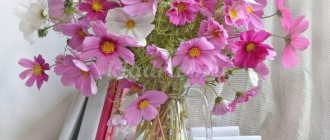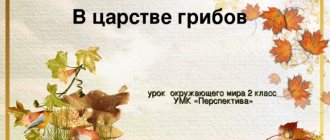Integrated lesson in mathematics and the surrounding world in 4th grade
Mathematics
Integrated lesson in mathematics and the surrounding world in 4th grade
Topic: “Generalization of students’ knowledge on the topic “Quantities” based on local history material.”
Goals:
- To consolidate students’ knowledge on the topic “Quantities”, using and enriching students’ ideas about their native land (Samara region);
- Develop creative thinking;
- Cultivate love for your small homeland.
Equipment:
- Exhibition of books and periodicals on the theme “I praise you, my native land!”;
- Phonogram of the song “Motherland”;
- Map of the Samara region;
- Cards with names of quantities - length, mass, area, volume, cost;
- Cards with a lesson plan;
- “Atlas of the Samara Region”, publishing house “Roscartography”, 1999;
- Assignments for independent work;
- Cards with letters for making words (rooster, ram, duck);
- Cards - “help” No. 1, 2, 3;
- Images of landing pads in the shape of an octagon, hexagon, pentagon, quadrangle;
- Textbook “Mathematics” for grade 4, part 1, author M.I.Moro, publishing house “Prosveshchenie”, 2004;
- Image of a hot air balloon.
During the classes:
- Organizational moment (a recording of the song “Motherland” is played, lyrics by E. Tarakhovskaya, music by N. Glazkova).
- Setting goals and objectives for the lesson.
- Why did our lesson begin today with a song about our native land? (students' answers)
- How do you imagine our region? (students' answers)
- How do people live and what do they do? (students' answers)
- Which city is the main one in our region? (Samara city)
- Guys, find the city where we live on the map. (city of Syzran)
- Working with a map at the board.
- Expressive reading of T. Timonina’s poem “My City”:
| Far from the shackles of state, On the banks of the great river, Throwing a cover of greenery. Our city is spread out quietly. And blooming every year, He gives the residents warmth, so that, burning with a bright torch, they can work, create, and do good. With the gentle fire of evening lanterns He will warm the soul in difficult moments, And with the soft coolness of linden alleys He will lead you away from vanity and turmoil. And no matter how fate turns out, You are the haven of all my aspirations, I want to stay with you forever, My beloved city, my Syzran! |
— Guys, our city is our little Motherland, in 2008 Syzran will turn 325 years old. You can learn a lot about the history of the city and region from books, magazines and newspapers that are presented at the exhibition “I praise you, my beloved land!” “Today you and I will study our native land, and the knowledge you gained in lessons on the topic “Magnitudes” will help us in this.
- Updating knowledge.
- What can you say about the concept of “magnitude”? (students' answers)
- What can be measured in objects? (As students answer, cards appear on the board: length, mass, area, volume, cost.)
- What can be measured in phenomena? (A card appears on the board: time)
- What actions can be performed with quantities?
On the board, as students answer, using cards, the teacher draws up a lesson plan:
5. Unit conversion;
6. Arithmetic operations with quantities;
7. Problem solving.
- Work on summarizing knowledge on the topic.
0. Oral counting. — I propose to go on an exciting journey in a hot air balloon. Such flights began to take place back in the 18th century, people took to the air on balloons filled with smoke from a fire. The man skillfully used this invention. Balloons - aerostats - were adapted for travel, cargo transportation, and scientific research. The first hot air balloon was invented by the Montgolfier brothers in 1783.
- How old is the hot air balloon? (224 years old)
- How many centuries is this? (2 centuries and 24 years). Prove it.
(A picture of a balloon appears on the board)
— Guys, we are flying over the territory of the Samara region. (During the lesson, all geographical objects are demonstrated by the teacher on a map of the area). It is located on the East European Plain. Our region borders on the Ulyanovsk, Saratov, Orenburg regions, as well as Tatarstan. It has a state border with Kazakhstan. In terms of its territory, the Samara region is significantly larger than such European states as Denmark and Switzerland. The area of the Samara region is 54,000 square kilometers, the area of Denmark is 43,090 square kilometers.
- How many square kilometers is the area of the Samara region larger than the area of Denmark? (per 10910 square kilometers)
- Guys, name the rivers flowing through our region? (Individual work of students with the “Atlas of the Samara Region” page 4, “Physical map”
- What is the largest river in the region? (Volga)
- The total length of the Volga is 3690 kilometers, of which 3350 kilometers the river flows through the territory of other regions. How many kilometers are there in the Samara region? (340 kilometers).
1. Independent work followed by a frontal check.
- Who were the first balloon passengers?
We will learn about this by completing the task. There are three cards in front of you. Consider them and choose one for yourself. Perform actions with quantities.
| Card No. 1 | Card No. 2 | Card No. 3 |
| 100km 800m + 600m 5 kg - 4kg 130g 17cm + 90mm 40t - 150c 5days - 48h | 7dm - 7cm 53dm 2cm + 286cm 3kg 600g - 1515g 41t + 94ts 3h 45min - 120min | 9cm 8mm - 84mm 120mm + 14cm 18t 7ts+3ts 13m - 50dm |
On the board there are cards with quantities - the results of calculations, and on the back there are letters:
| For card No. 1 | For card number 2 | For card number 3 | |||
| 101km 400m 870g 26cm 25t 3 days | ROOSTER | 6dm 3cm 81dm 8cm 2kg 85g 50t 4ts 1h 45min | B A R A N | 1cm 4mm 26cm 19t 8m | DUCK |
2. Problem solving. - So, the passengers of the first balloon were a rooster, a ram and a duck. Let's find out how many of them there are. To do this, let's solve the problem.
Task. A rooster is 2 times lighter than a duck and 49 kilograms 500 grams lighter than a ram. What is the mass of the duck if the mass of the ram is 52 kilograms? What is the total mass of the passengers in the first balloon?
Students solve the problem independently; if they have difficulty, they use “help” cards No. 1, No. 2, No. 3.
Card - “help” No. 1.
1. Think about it, can you immediately answer the main question of the problem?
2. What do you need to know first to do this?
Card - “help” No. 2.
3. To find out the total mass, you need to know the mass of each animal.
4. The mass of the ram is known.
5. Can you find out the mass of a duck? What do you need to know first to do this?
Card - “help” No. 3.
6. Find the mass of the rooster. Compare its mass with the mass of a ram.
7. Now compare the mass of a rooster and a duck. Find the mass of the duck.
8. Find the total mass of all three passengers.
In the margins, students indicate the number of the card they used to solve the problem. The correctness of the decision is determined through mutual verification.
- Guys, these animals are bred at home. What are these animals called? (domestic).
When working with the “Agriculture” map, page 9 of the “Atlas of the Samara Region,” students name other domestic animals on which the livestock industry of our region specializes.
| Physical education minute. Along our native land we walk together. To our right is a green meadow. There is a forest on the left. Such a forest is full of miracles. The squirrel leaps from branch to branch. The owl flaps its wings. Wow! It's breathtaking! |
- What wild animals living in our region do you know? (students' answers).
- What natural community is home to these animals? (forest).
Listen to S. Nikulina’s poem “Russian Forest” (excerpt):
| There is nothing nicer to wander and think here. It will heal, warm, and feed the Russian forest. Rowan berries, nuts and flowers, fragrant raspberries on the dense bushes are waiting for us in the forest. The forest loves pedestrians very much, for them it is completely their own. There's a goblin with a green beard wandering around here somewhere. Life seems different, And the heart does not hurt, When overhead, like eternity, the forest is noisy. |
- What is a forest for a person? (The forest is a place for a person to relax, there are many medicinal plants in the forest, a person can find food in the forest, etc.)
- Guys, it turns out that forests in the Samara region occupy only one tenth of its territory. What is the area of forests in the Samara region? (5400 square kilometers).
— The reserves of “green wealth” in the Samara region are small, so the task of the residents is to preserve and increase forest lands. Students name the necessary measures to preserve forests, focusing on the illustrations of the “Atlas of the Samara Region” page 15.
- If forests occupy a tenth of the region’s territory, then agricultural lands occupy most of its territory. What crops are grown in our area? Students answer this question using the Agriculture card.
- Guys, you named a lot of agricultural crops, but most of all are grown in the area of grain crops, and which crop comes next in terms of the amount of area occupied, you will find out by guessing the riddle:
| In the garden by the path there is a sun on a leg. Only the yellow rays are not hot. (Sunflower) |
- Yes guys, it's a sunflower. I suggest you solve problem No. 19, page 58 of the textbook about sunflowers.
Task. When sowing sunflower, 100g of seeds are consumed per acre. How many sunflower seeds will it take to sow a rectangular plot 80m long and 5m wide? (400g seeds) When solving the problem, a group form of work is used.
3. Consolidating students’ skills in relating units of quantities.
— Guys, the maximum heights of mountain ranges are written on the board. Crimean Mountains - 1545m; Ural Mountains - 1km894m; Zhiguli Mountains - 375m.
- What mountains are in our area? (Zhigulevskie)
The teacher indicates with a conventional sign on the map of the region the Zhigulevsky Mountains (Mount Strelnaya)
- Write down these values in descending order. (1km 894m, 1545m, 375m)
- Look at the values written on the board: 1894m, 37500cm, 15450dm, 15km45m, 1km545m, 18940m, 3750dm, 18940dm, 37m 50dm. Write equal values on separate lines.
Students complete the assignment in their workbooks. At the end of the work, an inspection is carried out with proof of the actions performed.
4. Working with geometric material.
- To land our balloon, landing sites were marked (in the shape of an octagon, hexagon, pentagon). Establish a pattern in the arrangement of geometric shapes.
- What figure will be next and suitable for landing our ball? (children come to the conclusion that the area for landing the ball should have the shape of a rectangle).
This figure, representing the landing site, is indicated on the board.
- We will learn about the size of this area by solving the problem in the textbook (No. 17 page 58). The problem is solved orally based on the drawing for this problem.
The teacher places the image of a balloon on the “landing pad.”
- Lesson summary. Grading.
- Homework. Write a story on the topic “I want to talk about my native land...” (using quantities).
